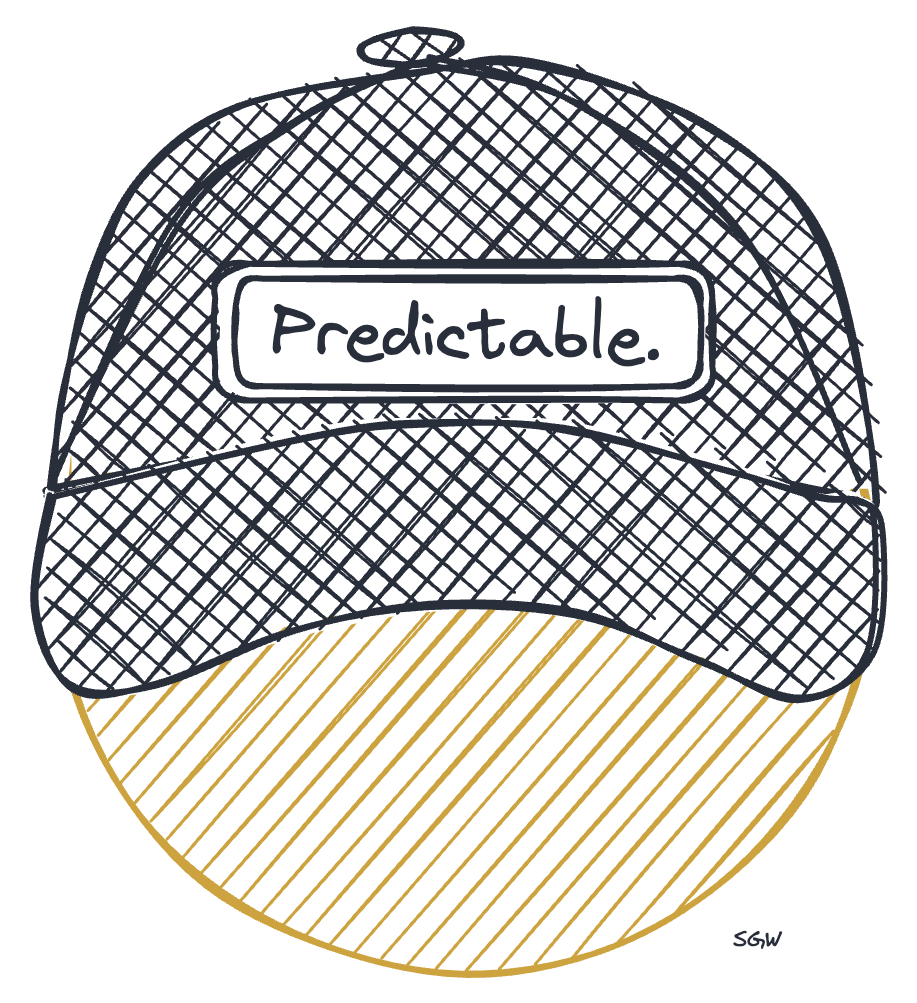Becoming Predictable
I was talking to someone the other day about measuring investment performance and we got on the topic of volatility. I mentioned, with some frustration, how volatile and unpredictable the performance at some of our businesses can be and my interlocutor said, “I didn’t think you would have cared about that.”
“What do you mean?” I asked.
“In my view,” he went on, “measuring and worrying about volatility only matters when it captures the risk of being a forced seller at a bad time. At a firm like yours, with your horizon and mandate, it doesn’t seem like that would be a problem.”
And he’s absolutely right. The fact that unpredictable volatility exists together with our ability to tolerate it is what creates one of our biggest competitive advantages as an investment enterprise. After all, you can’t leverage and flip unpredictable volatility (or you can try, but you shouldn’t, unless you want to risk blowing up spectacularly), so we’re able to make investments others simply can’t.
Yet despite it being what puts food on my table, unpredictable volatility is still frustrating because staying prepared to weather it is an impediment to performance. Every dollar we reserve for liquidity, for example, is one that’s not generating return, and everything that happens for a reason we can’t explain is something we can’t reliably repeat in the future.
And it’s that last bit that’s so frustrating and that also raises important existential questions such as “What are we doing here?” Because if you, as a business, lack agency, do you really have a business at all?
It’s in recognition of the fact that an answer to that question is “No, that’s more of a hustle than a business” that one of our strategic priorities with our businesses is to help them become more predictable. This can mean taking on lower margin, higher volume business or signing longer-term agreements. But you also have to be careful here because becoming more predictable is a slippery slope. Certainty is expensive and if you fill up all of your capacity with guaranteed low-margin work, you’re not going to do very well either.
Where does that leave us?
One widely used investing metric to analyze risk and volatility is the Sharpe ratio, which basically says that something is good if it has positive returns with low volatility with volatility here measured using standard deviation. In other words, something is considered volatile in the Sharpe ratio if it goes down or up a lot and going up or down a lot is bad. But then Sortino came along and said “Wait a second.” Because if something goes up a lot in investing, that’s good! So Sortino put forth his own ratio that only cares about how volatile something is when it’s going down with the goal of finding investments that go up a lot when they go up and only do down a little when they go down.
I didn’t bring up Sharpe and Sortino here to wonk out on risk management metrics, but rather to draw a parallel to what it ideally means for a business to become more predictable. This is to take steps and do things that gradually make bad months less bad without also limiting what makes good months good. Because while bad months frustrate me like they would anyone else, if not for them, there might not be any good ones.
-Tim


